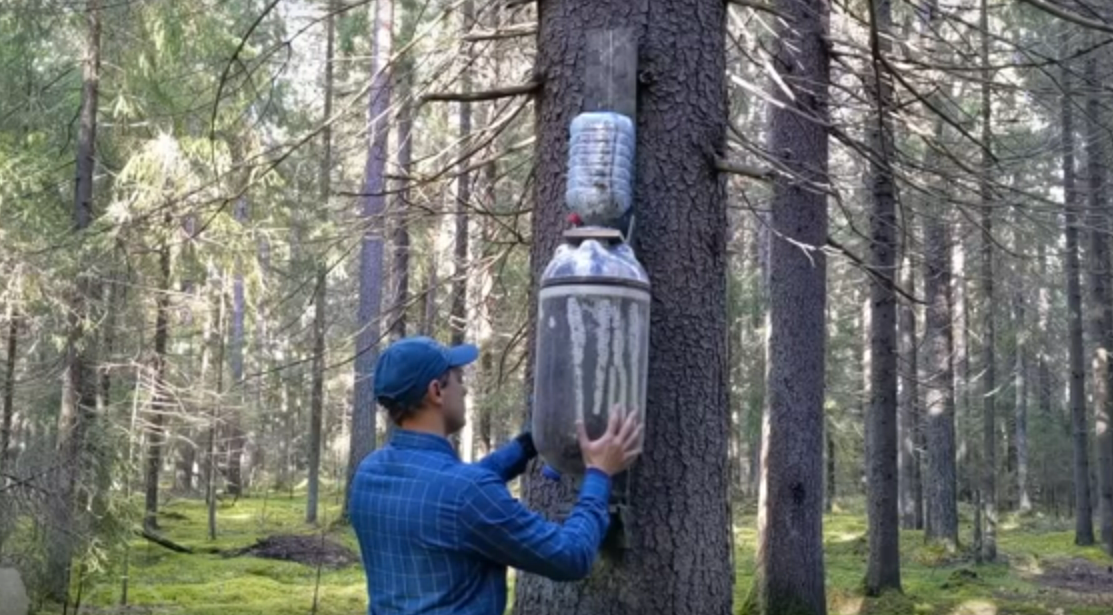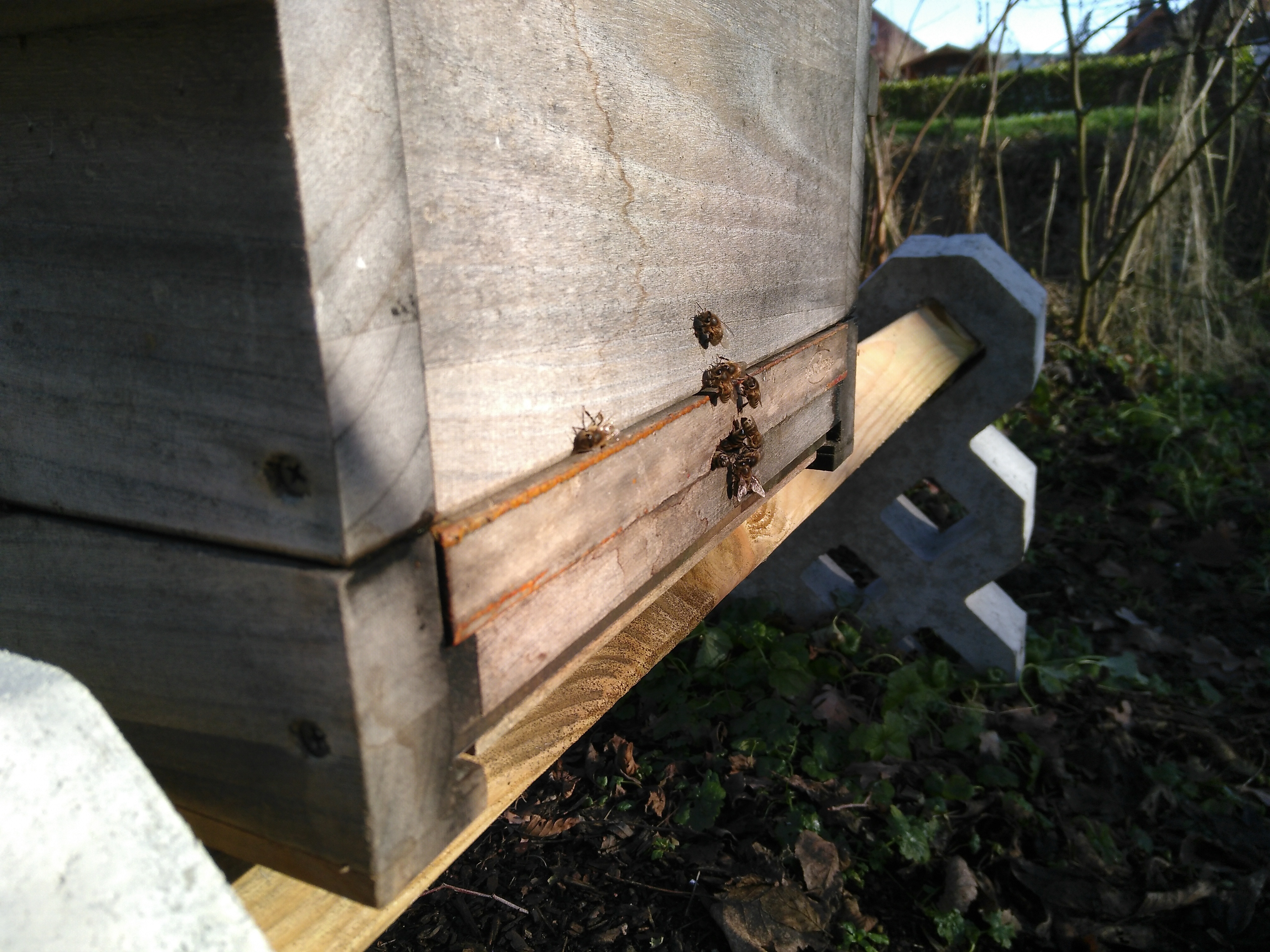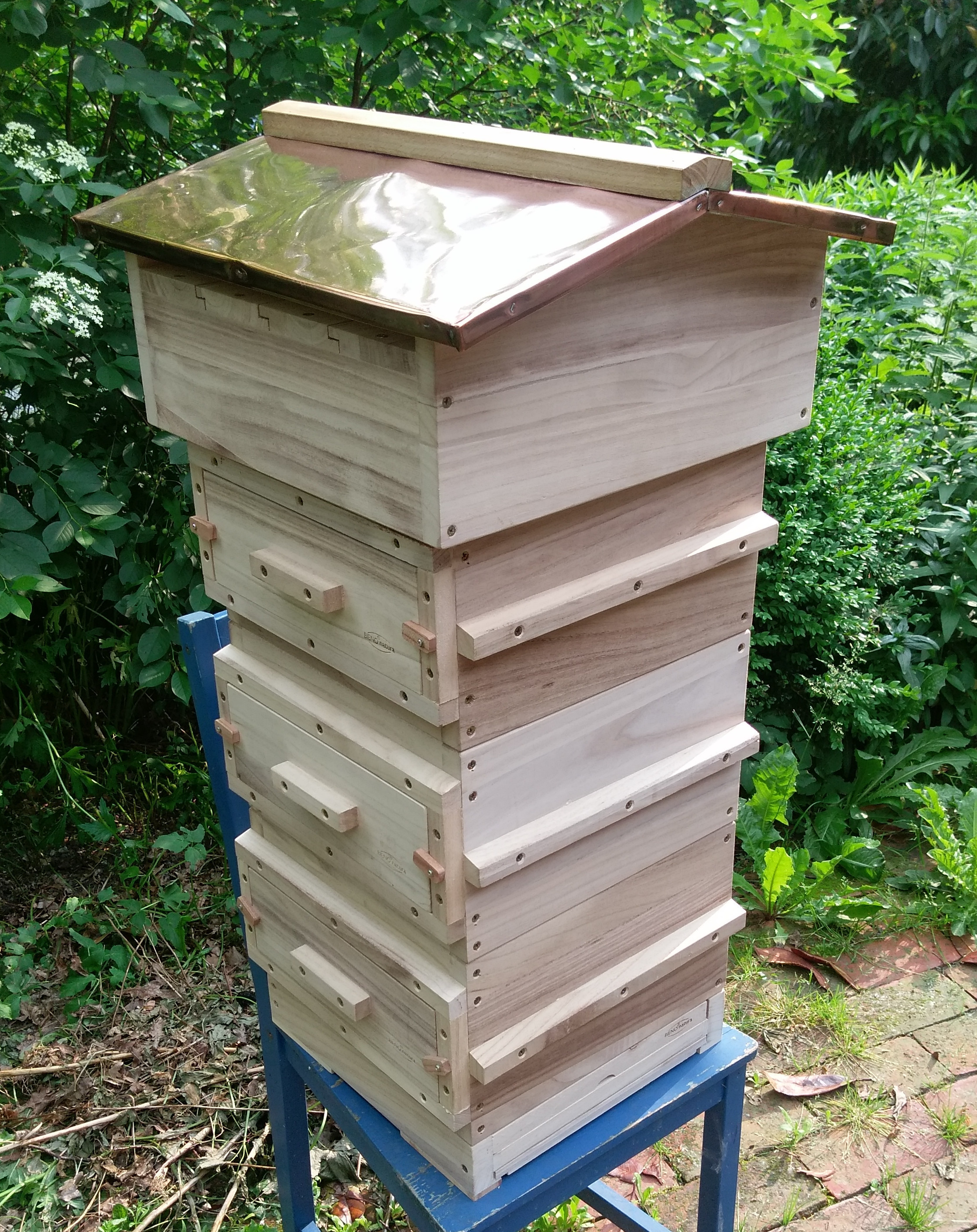One person like that
#beekeeping
2 Likes
2 Likes
#bees #beekeeping #varroa #permaculture
[Translated with www.DeepL.com/Translator (free version)]
In this counter-current operation, there are initiatives, carried at arm's length by people in search of restoring a balance with the living by cohabiting with it and even stronger, by wishing to co-create again via a holistic management. This is the case of Xavier Dumont.
Xavier Dumont is an amateur beekeeper at the Rucher de Cantegril in Toulouse. He was faced with a significant loss of his colonies following the thaw. In February 2019, three of his colonies lost their lives because the bees were no longer numerous enough to warm up.
In addition to the fatal outbreaks mentioned above, a too mild climate during these periods is responsible for the proliferation of varroa mites in the hives. Varroa is a parasite that spreads through the brood (the pupae, larvae and eggs protected by the worker bees).
Normally, there is not supposed to be any egg laying during the winter period but because of global warming, the trend has been reversed and the hives are infested by these pests, decimating the swarms and forcing beekeepers to use more and more inputs (use of chemical products). The vicious circle is set in motion.
Read also: Associations sue the French State for the collapse of biodiversity
Hibernate the bees
Faced with this double observation, Xavier Dumont immediately thought of the varroa mite not as a cause but as a consequence of global warming.
"I was a beekeeper from the age of 20 to 30. Once I retired, I took over the hives. It has been 9 years now. I experienced the winters 40 years ago, which gave me the idea to do what I do today. I am a scientist at heart and curious. I always have a logbook where I write down everything about my colonies. Every year I would record honey harvests, diseases etc. And I noticed that there were colonies that were dying that would never have died forty years ago. I asked myself what had changed, and I quickly realized that it was the milder winters," he explains for La Relève and La Peste.
In a healthy ecological context, bees go into lethargy during the winter. Virtually immobile and huddled together, they release calories that keep them at a temperature of 32 to 36 degrees. This is how they survive.
"Bees are, individually, poikilothermic insects, (which do not regulate their temperature). But, in winter, grouping together to form the cluster, they become like a single homeothermic organism, maintaining an average temperature of 32 to 36° when there is brood, and 25° in theory when there is none, in the coldest part of winter. They transform glucose, coming from their honey reserves in winter, or by lipolysis, from their fat reserves, into calories and therefore heat.
By going out more during this period, which is nevertheless colder, they burn their fat outside... There is an imbalance and the bees succumb before they have time to be replaced. This is why Xavier Dumont decided to conduct an experiment.
"I thought back to my experience forty years ago, when I had an apiary. I went to observe them every day and sometimes they didn't come out for 3 weeks or even a month. So I thought I would artificially reproduce a similar climatic environment. I put them in my cellar, in fact my garage, in the dark so that they would not be incited to come out and would go into lethargy. The result exceeded my expectations," he smiles for La Relève and La Peste.
For 70 days, he placed four hives with different numbers of bees and queens of varying ages in a garage. The garage was in the dark. Every twelve days he let them out for a whole day so that they could defecate and avoid the risk of dysentery. The temperatures varied from 0° to 12°. The idea was to reproduce a climatic environment similar to that of forty years ago.
As the cycle resumed, the bees were discouraged from going outside because of the cold temperatures and therefore went into a state of lethargy to survive the season. The result: he found 100% survival of his colonies.
His findings are as follows:
* Queens did not lay eggs for 60 days.
* Radical drop in varroa mites.
* Weight loss of the bees between 2.1 kg and 6.1 kg over 70 days. This allowed them to resist all winter by being vigorous.
* Mortality rate of the bees between 105 and 350 per hive in 70 days against the totality of its apiary in 2019
* 60kg of honey harvested at the end of August on average per hive.
An appeal to all beekeepers
At first, his beekeeper neighbors were not convinced by the experience. But faced with this obvious success,
At first, his beekeeping neighbors were not convinced by the experiment. But faced with the obvious success, they quickly changed their minds.
"The first year I was called crazy. Some professionals told me that the problem with the bees was the varroa mite, which is a brood parasite. Most of the deaths are from pesticides and varroa mites. So I did my experiment and every time I had results, I sent them the report. When they saw the final results in the spring, they totally changed their minds. Others followed my idea directly, but as they did not have a cellar, I suggested other types of protocols which are explained in detail on my website. Those who tried it told me that their bees were doing very well and that it was more than expected," enthused Xavier Dumont to La Relève and La Peste.
The figures speak for themselves, from 100% loss, he went to 100% survival. For this reason, he has decided to launch an appeal to beekeepers to repeat this experience on a large scale next winter.
He would like to have enough participants so that the study can be taken seriously and be considered conclusive. Thus, those who wish to do so can go directly to his website: https://lerucherdecantegril.wordpress.com/ where all the steps and protocols are explained in detail. If beekeepers do not have a cellar, he proposes two alternatives to make the experiment feasible.
In the wild, bees fare better than their domestic counterparts. Some wild swarms live in walls or in tree trunks and never die. Unlike hives, which let the sunshine through more easily and thus heat up the wood more quickly, causing the bees to leave during cold spells, wild swarms are protected from this phenomenon. The environments the bees choose remain in darkness and take longer to warm up.
"It would take at least three or four days of bright sunlight for it to reach the colony. This gives them much less incentive to go outside. It's often said: bees are "the heat, the sun", so what I'm saying may seem counterintuitive, but that mantra doesn't hold true in winter. They work in cycles. In the spring, they need to have mild conditions for honey flows but in the winter, they need to be faced with cold to stay lethargic to preserve themselves. Wild bees are better off because they are not in hives and they often simply swarm," explains Xavier Dumont at La Relève and La Peste.
The mobilization of beekeepers is therefore vital for the survival of bees in hives.
Even beginner beekeepers are invited to participate in the experiment. Nearly 300 hives will already be subjected to the experiment. Ideally, Xavier Dumont would like to be able to test the experiment with 4,000 to 5,000 colonies, in order to be able to compare the benefits according to the age of the queen, but also the hives that are not treated with amitraz for example. This pesticide used to control varroa mites is also harmful to bees.
Once the confinement of bees on a large scale will have proved that harsh winters are necessary for their survival, it will be time to reproduce this experimentation not in garages but outside by fighting against global warming to keep the living intact and thus rethink our relationship with it in a holistic and benevolent vision. Because we must not forget that we are an integral part of the living and that without it, we are nothing.
September 9, 2021 - Liza Tourman
FacebookTwitter
"More often than not, people give up their power because they think they don't have any"
Your support counts more than anything Make a donation
Recueil - Special Edition "Recueil" is the title of our new edition. This special edition gathers all the best texts of La Relève and La Peste for more than 7 years. We have gathered 14 authors who have shaped La Relève and La Peste since its beginnings. This book allows you to understand everything about the biggest issues of our world. Whether you already have our books or want to know about our editions, the best choice is this special edition that gives a global view of our editorial work. Order
Want to be informed? Sign up for our newsletter to be informed in a different way
One person like that
2 Comments
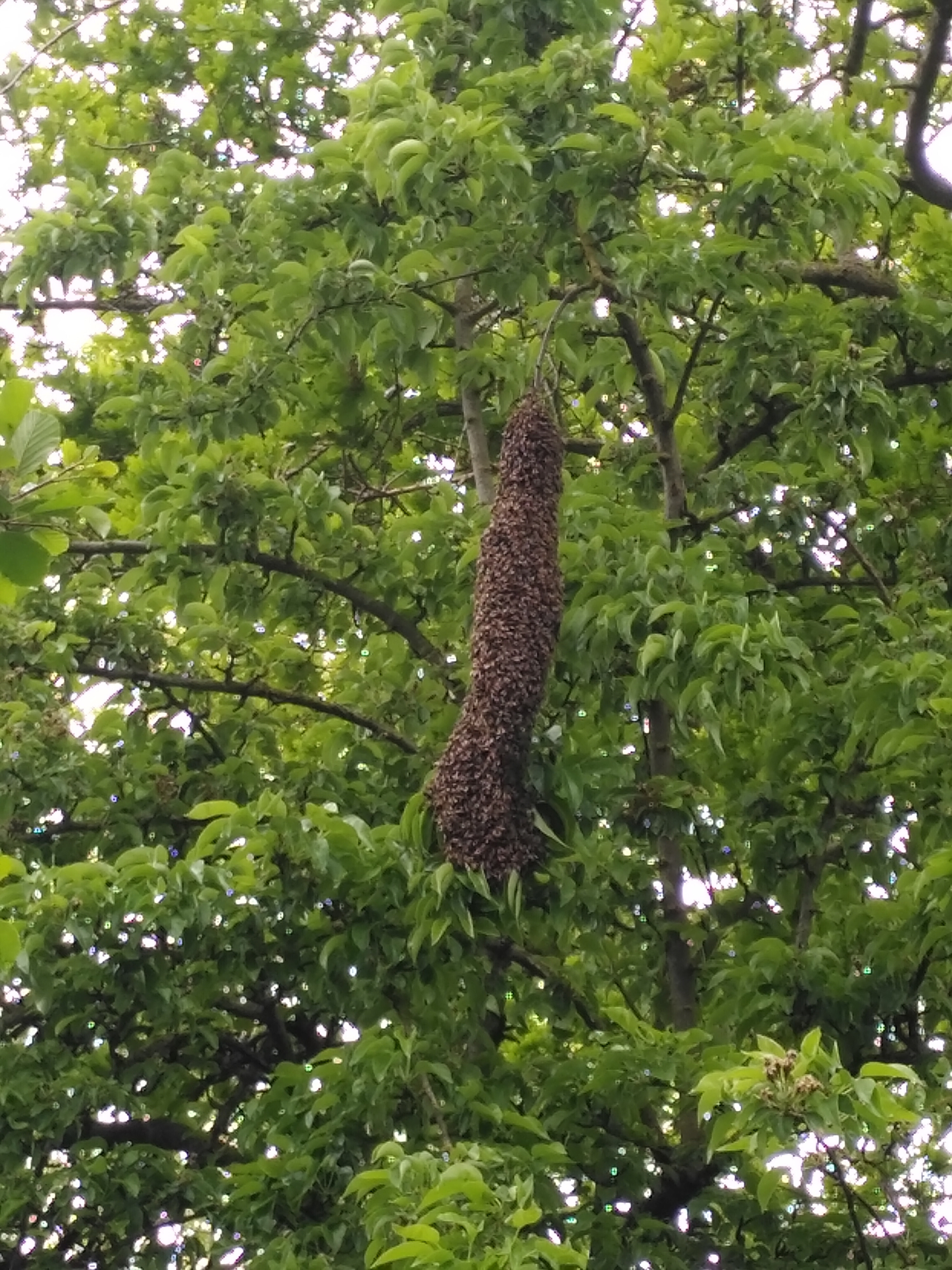
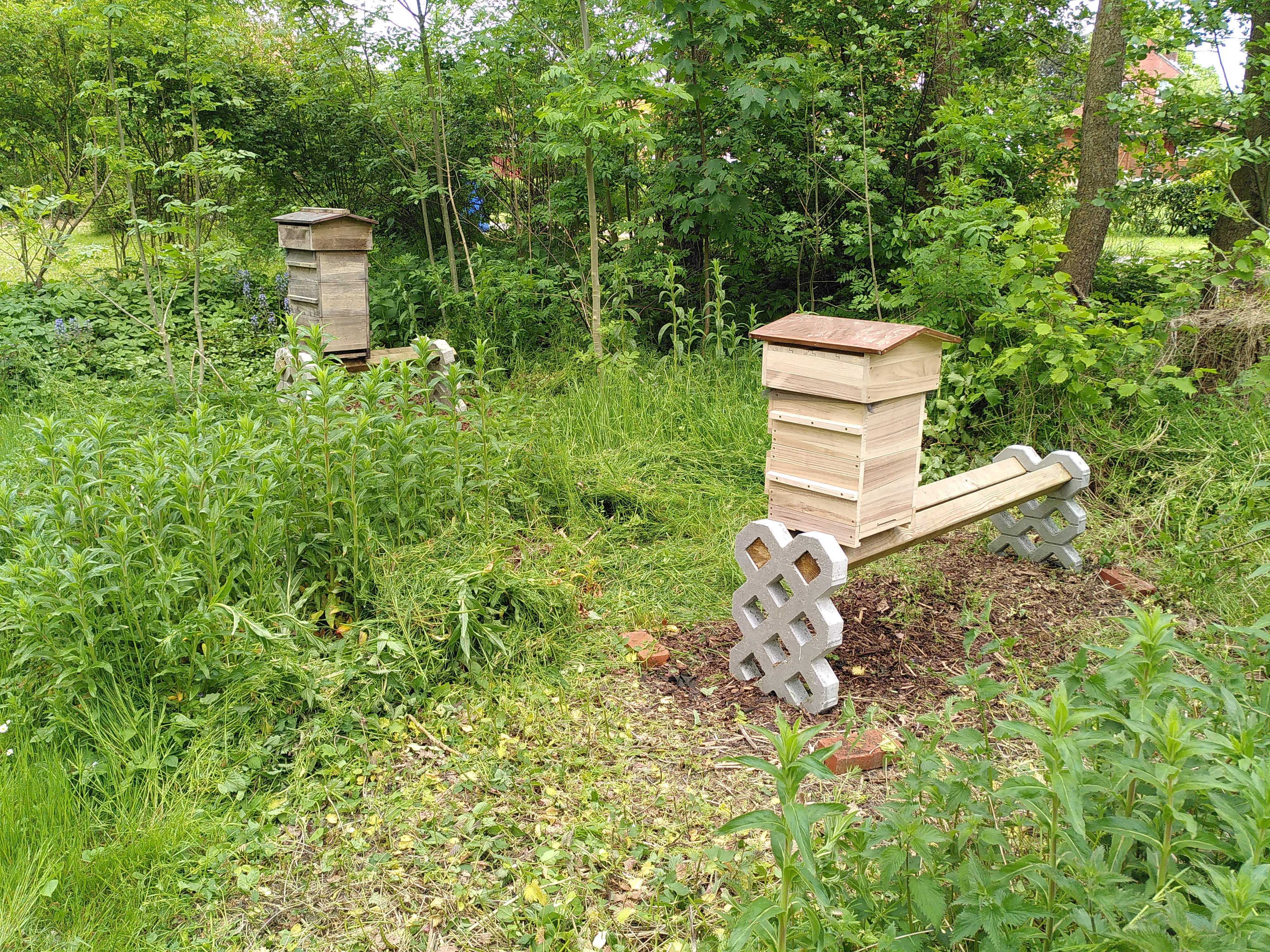
Der Schwarm
Da ich das Schwärmen nicht unterbinde, war es wieder so weit. Der Schwarm hängt an fast exakt der gleichen Stelle wie letztes Jahr und ist kaum zu erreichen. Dieses Jahr haben sich die Damen nur neun Tage länger Zeit gelassen ...
Das neue Zuhause steht, und jetzt hoffe ich, dass sie den Weg selbständig finden werden.
#imkerei #imkern #beekeeping #bee #bees #warré #warre #ownwork #biene #bienen #bienenhaltung
One person like that
One person like that
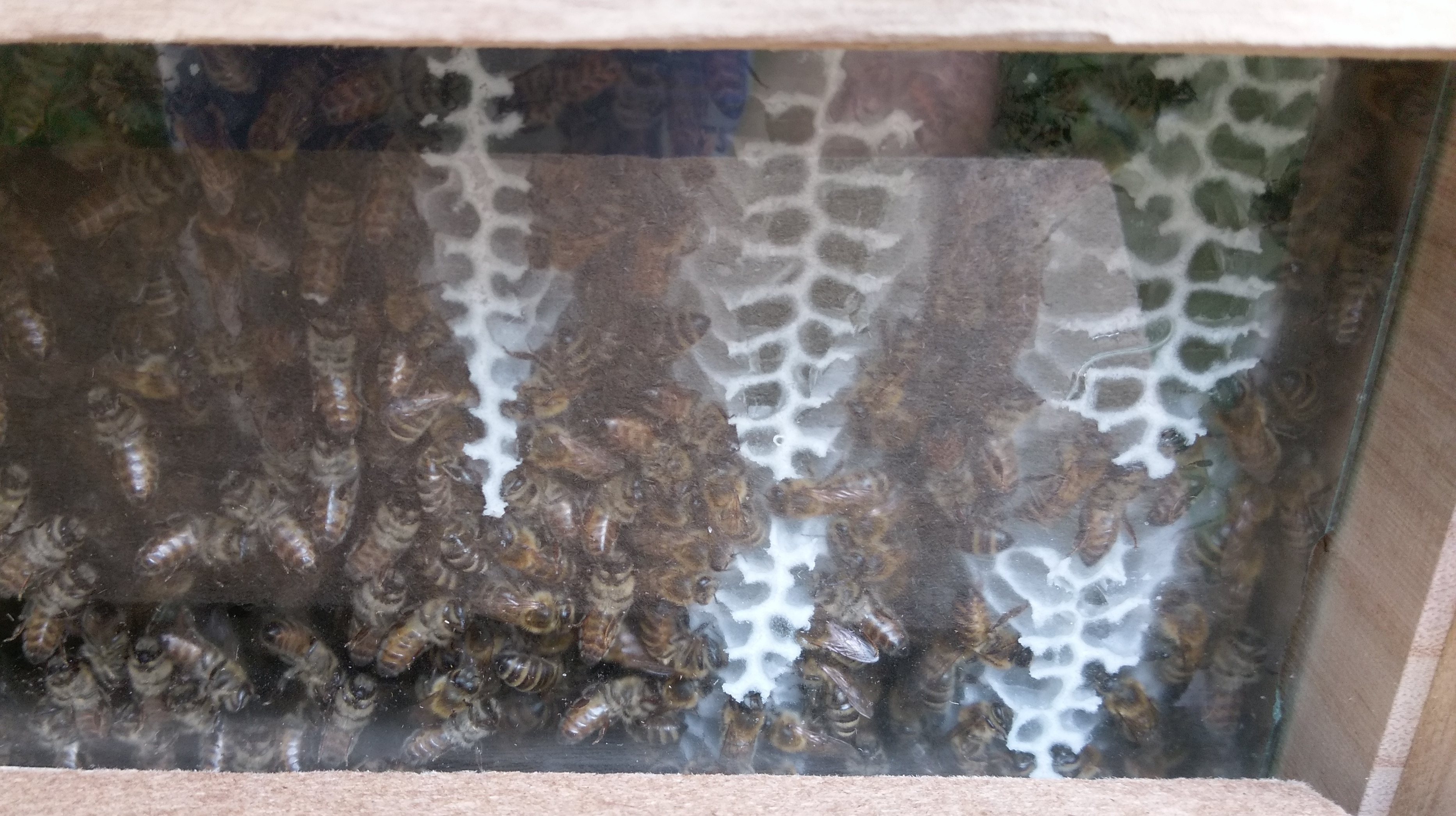
Gerade mal zwei Wochen nachdem ich meinen Kunstschwarm eingeschlagen habe, haben die Damen die erste Zarge zu 2/3 ausgebaut. Bemerkenswert, wie fix die sind! Sie schleppen massenweise Pollen an, gebrütet wird also auch \o/
Durch die tollen Guckzargen muss ich auch nicht jedes mal die Beute aufmachen, wenn ich mal schauen will. Sehr tolle Erfindung! Außerdem kann man die Brutwärme an der Glasscheibe sehr gut erfühlen. Und das Wichtigste: Wenn ich mich vor das Flugloch setze, dauert es keine 5 Minuten und ich bin dermaßen entspannt und runter gefahren, wie ich es nicht für möglich gehalten hätte!
#Biene #Bienen #Honigbiene #Imker #Imkerei #Bee #Beekeeping #warré
One person like that
1 Comments
Die Haselnuss blüht.
Der Frühling ist offiziell angekommen!
Das Imkerjahr steht in den Startlöchern.
#Frühling #Haselnuss #spring #imkern #beekeeping #hazelnut #blossom


